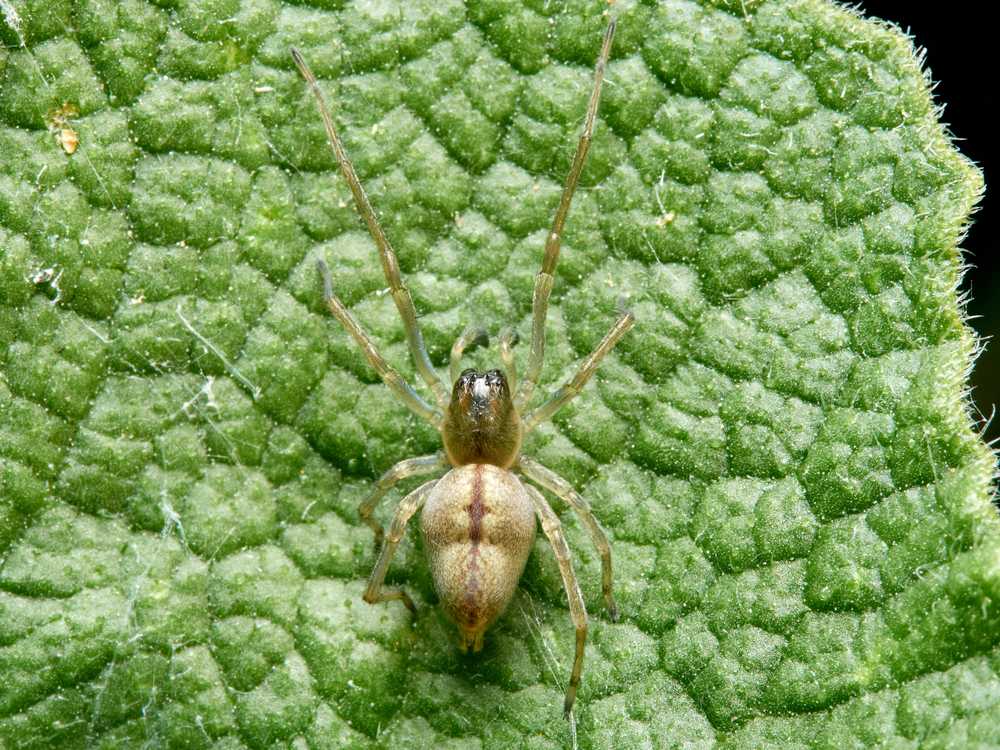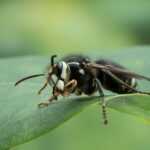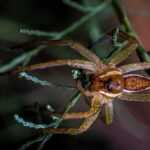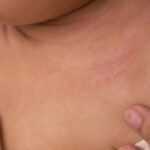Sac Spider Bite: Symptoms, Treatment, and Prevention
Worried you might have a sac spider bite? Don’t panic! This comprehensive guide will walk you through how to spot the symptoms, manage the bite effectively, and keep these sneaky spiders at bay.
- Yellow sac spider bites can cause symptoms like pain, swelling, and redness that may resemble other spider bites but are usually less severe.
- Immediate first aid involves cleaning the bite area, applying a cool compress, and using over-the-counter pain relievers. Seek medical attention if symptoms worsen or severe reactions develop.
- Preventing sac spider bites means sealing cracks in your home, keeping clutter down, and wearing protective gloves when gardening or working outdoors.
Spotting a Sac Spider Bite: What to Look For
Yellow sac spiders are small, pale yellow or cream-colored arachnids that often hide in the shadows of your home. Their slender bodies and light yellow coloration help them blend in, making them hard to spot. Their bite might catch you off guard with a sharp sting, leading to a red bump that can be mistaken for other insect bites. Sometimes, you’ll notice two tiny red puncture marks close together — a signature of the sac spider’s bite.
Though yellow sac spiders are venomous, their bites are rarely dangerous to humans. Early recognition of a sac spider bite can help you manage symptoms quickly and avoid complications.
Early Signs and Symptoms
Right after a bite, you might feel a sharp sting similar to a bee sting, followed by a red bump that can become swollen and tender. Other common symptoms include:
- Burning sensation
- Itching and irritation
- Tenderness and sensitivity around the bite area
These symptoms can last several days, with swelling sometimes hanging around for up to a week.
Occasionally, you might feel generally unwell or experience mild malaise, so keep an eye on your symptoms and monitor for any other symptoms.
When Symptoms Escalate
In rare cases, the bite site can worsen, developing blisters or even small sores. Some unlucky individuals may experience necrotic lesions — patches of dead skin caused by the venom. While this is uncommon, it’s important to watch for signs like persistent burning, spreading redness, or unusual skin changes.
Remember, sac spider bites generally cause less severe damage than bites from more notorious spiders like the brown recluse. Still, if symptoms persist or you experience systemic issues like fever or nausea, it’s time to seek medical attention.
Sac Spider Bites vs. Other Spider Bites: What’s the Difference?
Yellow sac spiders are among the most common spiders to bite humans, but their venom is typically mild compared to more dangerous species. Understanding how sac spider bites differ from others — especially the infamous brown recluse — can help you respond appropriately.
Brown Recluse vs. Sac Spider Bite
Both bites might start with redness and swelling, but brown recluse spider bites often lead to severe tissue damage and necrosis, while sac spider bites usually heal without major complications. The initial sting from a sac spider feels sharp like a bee sting, but the brown recluse bite can escalate to painful ulcers.
If you’re unsure which spider bit you, or if symptoms worsen, seek medical advice promptly.
Avoiding Confusion
Because symptoms can overlap, sac spider bites are sometimes mistaken for brown recluse bites. The key difference lies in severity: sac spider bites tend to cause localized pain and swelling, while brown recluse bites pose a higher risk for serious skin damage.
Accurate identification helps prevent unnecessary alarms and ensures you get the right treatment.
What To Do Immediately After a Sac Spider Bite
If you suspect a sac spider bite, act fast to reduce discomfort and prevent infection. Start by washing the bite area thoroughly with soap and water to remove any venom and dirt.
Next, apply a cool compress or ice pack to ease swelling and numb the pain. Over-the-counter pain relievers like ibuprofen can help reduce inflammation. These simple steps can make a big difference in your recovery.
First Aid Tips
- Clean the bite with hydrogen peroxide or antiseptic to prevent secondary infection.
- Use an ice pack wrapped in cloth to reduce swelling and soothe pain.
- Consider antihistamines to ease itching and redness.
- Take over-the-counter painkillers to manage discomfort.
When to Call a Doctor
Seek medical attention if you develop severe symptoms such as:
- Fever or chills
- Intense pain or swelling spreading beyond the bite
- Signs of an allergic reaction (difficulty breathing, hives)
- Persistent or worsening symptoms beyond a few days
Timely medical care can prevent complications and ensure proper healing.
Home Remedies and Treatments for Sac Spider Bites
Alongside medical treatments, natural remedies can provide soothing relief. Aloe vera gel, known for its skin-calming properties, helps reduce irritation and promotes healing. Peppermint oil, applied carefully, may also alleviate discomfort.
Using these remedies along with standard treatments can speed recovery and ease symptoms.
How to Prevent Sac Spider Bites
Prevention is your best defense against sac spider bites. These spiders often build silk sacs or egg sacs in corners, behind furniture, and in cluttered areas. Keeping your home tidy and sealing entry points can keep them out.
Home Maintenance Tips
- Seal cracks and gaps around windows, doors, and foundations.
- Remove leaf litter and foliage close to your home’s exterior.
- Reduce clutter indoors to eliminate hiding spots.
- Regularly vacuum and dust to disrupt spider sacs and webs.
Personal Precautions
- Wear gloves when gardening or handling firewood.
- Shake out shoes and clothing before wearing.
- Be cautious when moving boxes or stored items in dark spaces.
When Professional Help Is Needed
If sac spiders become a persistent problem, professional pest control services can provide targeted treatments to reduce their numbers and keep your home spider-free.
Experts can identify the species, assess infestation levels, and recommend effective solutions tailored to your needs.
Interesting Facts About Yellow Sac Spiders
- Yellow sac spiders belong to the family Clubionidae, a group of hunting spiders known for their silk sacs.
- Unlike most spiders, yellow sac spiders don’t build webs to catch prey; they actively hunt at night.
- Female sac spiders lay several egg sacs, each containing dozens of eggs, and fiercely guard them.
- Young spiderlings stay near their egg sacs before venturing out to hunt.
- These spiders can be found in many northern states and adapt well to indoor environments during colder months.
- Despite their small size, yellow sac spiders have long legs and sharp fangs capable of piercing human skin.
- They do not jump but are excellent climbers, using scopulae (dense hairs) on their feet to scale smooth surfaces.
While sac spider bites can be painful and uncomfortable, they are rarely dangerous. Recognizing the symptoms early, providing prompt first aid, and taking preventive measures can help you avoid complications.
If symptoms worsen or you’re unsure about the bite, don’t hesitate to seek medical advice. For ongoing spider problems, professional pest control is your best bet to get rid of yellow sac spiders and keep these eight-eyed invaders at bay.
Frequently Asked Questions
Are sac spiders poisonous?
Sac spiders, including the two species commonly found in North America, are venomous but not poisonous. Their venom can cause mild pain and swelling in human skin but is generally not dangerous.
How can I tell if I have a yellow sac spider infestation?
Look for small silk sacs or egg sacs in corners, young spiderlings at night, and unexplained bites. Frequent sightings on walls, window sills, and ceilings are also signs.
Are South African sac spiders poisonous?
Yes, South African sac spiders have venom that can cause tissue damage. Medical attention is recommended if bitten.
What are the initial symptoms of a yellow sac spider bite?
Typically, a red bump with mild pain, swelling, and sometimes a burning sensation at the bite site.
How to differentiate a yellow sac spider bite from a brown recluse bite?
Yellow sac spider bites cause localized pain and swelling, while brown recluse bites can lead to severe tissue damage and necrotic lesions. Seek medical care if symptoms persist or worsen.




